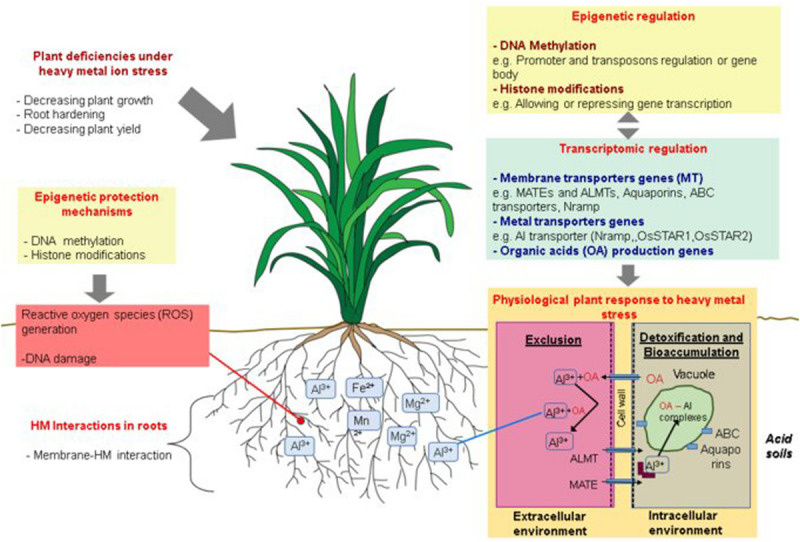FIGURE 2.

Schematic representation of physiological, genetic, transcriptional and epigenetic mechanisms involved in plant responses to heavy metals (HM) exposure. Plant exposure to HMs induces different physiological deficiencies that could be countered by two principal tolerance mechanism shown at the bottom right of the figure: an exclusion mechanism, where the plant secretes organic acids (OAs) out of the root, avoiding the entrance of HM ions or, a detoxification mechanism and sometimes bioaccumulation, wherein plants internalize HM ions through membrane transport proteins such as ALMT or MATE carriers, and subsequently, HMs can be chelated by organic acids (OA) or translocated into the vacuoles through ABC carriers or aquaporins. The regulation of HM responsive genes has been related to epigenetic mechanisms as DNA methylation and histone modifications which can repress or activate gene expression through promoter or gene body methylation as well as avoiding transposon movement (top right). Another important epigenetic mechanism involved in the HM stress response is the hypermethylation along the genome to protect DNA from possible damages caused by metal subproducts.
